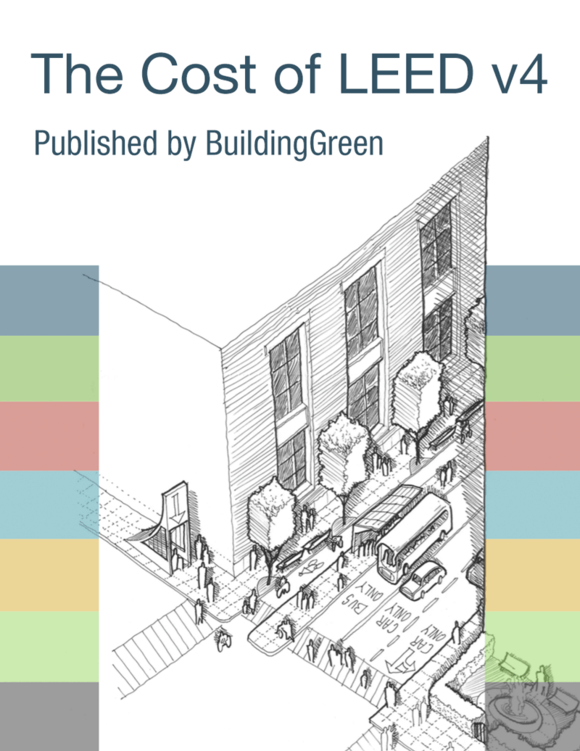Edit the guidance to read:
"Group Approach
All buildings in the group may be documented as one.
Campus Approach
Option 1: Eligible.
Option 2: Ineligible. Each LEED project may pursue the credit individually."
Hospitality-EBOM-v4 SSc1: Site Development- protect or restore habitat
LEEDuser overview
Frank advice from LEED experts
LEED is changing all the time, and every project is unique. Even seasoned professionals can miss a critical detail and lose a credit or even a prerequisite at the last minute. Our expert advice guides our LEEDuser Premium members and saves you valuable time.
For full access, sign up now for LEEDuser Premium
Already a premium member? Log in now
Credit language

© Copyright U.S. Green Building Council, Inc. All rights reserved.
Requirements
Option 1. On-Site Restoration (2 points)
Establishment
Have in place native or adapted vegetation on 20% of the total site area (including the building footprint), a minimum of 5,000 square feet (465 square meters), to provide habitat and promote biodiversity.Performance
None.OR
Option 2. Financial support (1 point)
Establishment
Provide financial support equivalent to at least $0.05 per square foot (US$0.50 per square meter) for the total site area (including the building footprint). Financial support must be provided annually to a nationally or locally recognized land trust or conservation organization within the same EPA Level III ecoregion or the project’s state (or within 100 miles [160 kilometers] for projects outside the U.S.). For U.S. projects, the land trust must be accredited by the Land Trust Alliance.Performance
Provide the specified financial support annually.Pilot Alternative Compliance Path Available
This credit has a pilot ACP available in the LEED Pilot Credit Library. See Site development - protect or restore habitat - alternative compliance path for more information.
Frequently asked questions
The land trust we contacted wants to use our contribution to construct an educational building. Is this ok?The answer to this question is available to LEEDuser premium members. Start a free trial » (If you're already a premium member, log in here.) |
What does it cost?
Cost estimates for this credit
On each BD+C v4 credit, LEEDuser offers the wisdom of a team of architects, engineers, cost estimators, and LEED experts with hundreds of LEED projects between then. They analyzed the sustainable design strategies associated with each LEED credit, but also to assign actual costs to those strategies.
Our tab contains overall cost guidance, notes on what “soft costs” to expect, and a strategy-by-strategy breakdown of what to consider and what it might cost, in percentage premiums, actual costs, or both.
This information is also available in a full PDF download in The Cost of LEED v4 report.
Learn more about The Cost of LEED v4 »For full access, sign up now for LEEDuser Premium
Already a premium member? Log in now
Checklists
Step by step to LEED certification
LEEDuser’s checklists walk you through the key action steps you need to earn a credit, including how to avoid common pitfalls and save money.
For full access, sign up now for LEEDuser Premium
Already a premium member? Log in now
Documentation toolkit
The motherlode of cheat sheets
LEEDuser’s Documentation Toolkit is loaded with calculators to help assess credit compliance, tracking spreadsheets for materials, sample templates to help guide your narratives and LEED Online submissions, and examples of actual submissions from certified LEED projects for you to check your work against. To get your plaque, start with the right toolkit.
For full access, sign up now for LEEDuser Premium
Already a premium member? Log in now
Addenda
In BD+C, add the following text to the end of the section. In EBOM, add a new bullet point:
"Select plants that provide habitat and promote biodiversity. When specifying adapted vegetation, choose cultivars of native vegetation that are not considered invasive plants or noxious weeds, and that grow reliably well in the project’s locality with minimal maintenance, winter protection, pest protection, irrigation, and fertilization."
Replace the definition of "native vegetation" with the following:
"a species that originates in, and is characteristic of, a particular region and ecosystem without direct or indirect human actions. Native species have evolved together with other species within the geography, hydrology, and climate of that region."
LEEDuser overview
Frank advice from LEED experts
LEED is changing all the time, and every project is unique. Even seasoned professionals can miss a critical detail and lose a credit or even a prerequisite at the last minute. Our expert advice guides our LEEDuser Premium members and saves you valuable time.
For full access, sign up now for LEEDuser Premium
Already a premium member? Log in now
Credit language

© Copyright U.S. Green Building Council, Inc. All rights reserved.
Requirements
Option 1. On-Site Restoration (2 points)
Establishment
Have in place native or adapted vegetation on 20% of the total site area (including the building footprint), a minimum of 5,000 square feet (465 square meters), to provide habitat and promote biodiversity.Performance
None.OR
Option 2. Financial support (1 point)
Establishment
Provide financial support equivalent to at least $0.05 per square foot (US$0.50 per square meter) for the total site area (including the building footprint). Financial support must be provided annually to a nationally or locally recognized land trust or conservation organization within the same EPA Level III ecoregion or the project’s state (or within 100 miles [160 kilometers] for projects outside the U.S.). For U.S. projects, the land trust must be accredited by the Land Trust Alliance.Performance
Provide the specified financial support annually.Pilot Alternative Compliance Path Available
This credit has a pilot ACP available in the LEED Pilot Credit Library. See Site development - protect or restore habitat - alternative compliance path for more information.
Frequently asked questions
The land trust we contacted wants to use our contribution to construct an educational building. Is this ok?The answer to this question is available to LEEDuser premium members. Start a free trial » (If you're already a premium member, log in here.) |
Documentation toolkit
The motherlode of cheat sheets
LEEDuser’s Documentation Toolkit is loaded with calculators to help assess credit compliance, tracking spreadsheets for materials, sample templates to help guide your narratives and LEED Online submissions, and examples of actual submissions from certified LEED projects for you to check your work against. To get your plaque, start with the right toolkit.
For full access, sign up now for LEEDuser Premium
Already a premium member? Log in now
Frequently asked questions
The land trust we contacted wants to use our contribution to construct an educational building. Is this ok?The answer to this question is available to LEEDuser premium members. Start a free trial » (If you're already a premium member, log in here.) |
Addenda
Edit the guidance to read:
"Group Approach
All buildings in the group may be documented as one.
Campus Approach
Option 1: Eligible.
Option 2: Ineligible. Each LEED project may pursue the credit individually."
In BD+C, add the following text to the end of the section. In EBOM, add a new bullet point:
"Select plants that provide habitat and promote biodiversity. When specifying adapted vegetation, choose cultivars of native vegetation that are not considered invasive plants or noxious weeds, and that grow reliably well in the project’s locality with minimal maintenance, winter protection, pest protection, irrigation, and fertilization."
Replace the definition of "native vegetation" with the following:
"a species that originates in, and is characteristic of, a particular region and ecosystem without direct or indirect human actions. Native species have evolved together with other species within the geography, hydrology, and climate of that region."


